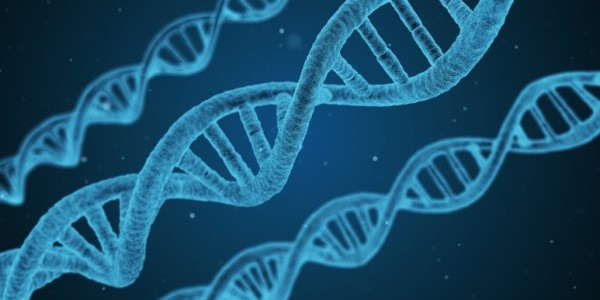It has been previously discussed that genes control the sequence of amino acids in a polypeptide. However we have not learned about the details. Today we will find more about how genes code for the sequence of amino acids linked by peptide bonds (formed through a condensation reaction) to form a polypeptide. There is a... Continue Reading →
The Davson-Danielli Membrane
Davson and Danielli were two scientists who proposed their model of the cell membrane in 1935, which were then revised in 1954. Earlier in 1925, Gorter and Grendal claimed that the ratio of total lipid surface area to total cell membrane surface area was 2:1, concluding that a layer of fatty molecules that is two... Continue Reading →
Genetics
Genes are something that everyone has regardless of gender and age. Some key topics involved in the field of genetics include traits, DNA, genetic variation, inheritance, and mutation. Let's take a look at what roles they play in genetics. Instructions for all living things are found in DNA. DNA is put together by complementary base pairs, and... Continue Reading →
Protein Functions and Denaturation
Today we will continue the discussion from the last post about proteins. This post will be mainly focused on the functions of protein and denaturation. Two Forms of Protein The two forms of protein are globular and fibrous. Globular proteins are spherical. They are active during cell metabolism and consist of complex polypeptide chains.... Continue Reading →
Molecules to Metabolism
Molecular biology is the investigation of biological activity at a molecular level. It is also the study of biochemical reactions between molecules that happen in a cell. Molecular biology is essential since it can be applied to every single organism that exists, as all living organisms go through chemical reactions to control their composition. Some... Continue Reading →
Genetic Modification
Genetic modification is a technique that became utilized quite recently. Scientists have developed skills to manipulate DNA, cells, and organisms artificially. Today, we will look at different methods of genetic modification such as PCR, gel electrophoresis, DNA profiling, etc. PCR PCR is short for the polymerase chain reaction - an artificial method of replicating DNA... Continue Reading →
Cell Membrane
The cell membrane is present in both plant cells and animal cells. They are selectively permeable, meaning that they let specific materials go in and out of the cell. Today, we will look at the cell membrane in detail. Phospholipid Bilayer The membrane consists of phospholipids, which has a hydrophilic (water-loving) head and two hydrophobic... Continue Reading →
Proteins, Carbohydrates, Lipids
We have been looking at four macromolecules: proteins, carbohydrates, lipids, and nucleic acids over the past few weeks. This week, we will look at three of the macromolecules, which is proteins, carbohydrates, and lipids. These three molecules are present in our everyday diet, and they have numerous uses in the body. Proteins Proteins are contained... Continue Reading →
5 Tests to Find Macromolecules
The last post, we learned about four types of macromolecules: carbohydrates, nucleic acids, proteins, and lipids. These macromolecules are contained in different types of food. However, how can we find out which macromolecules are in a specific food? The answer is, there are five tests that allow us to know whether a certain food contains a... Continue Reading →
Four Groups of Macromolecules
There are hundreds of thousands of different organic compounds in living cells. Some compounds that are very large are referred to as macromolecules, another word for "giant molecules." Macromolecules form when smaller compounds (monomers) join together to form larger compounds (polymers) in a process called polymerization. Macromolecules are divided into four groups based on their... Continue Reading →









